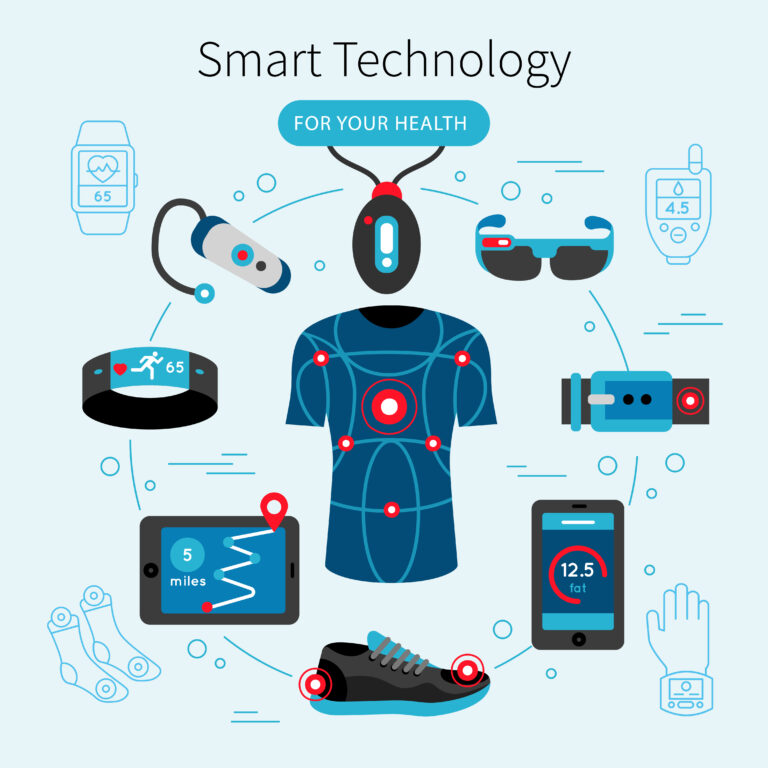Smartphones have been leading the communication, working and entertainment of people for over a decade. They have influenced life on a daily basis, beginning with pocket-sized computers, and proceeding to high-tech cameras and health-trackers, in ways that used to be unimaginable. However, the changing technology is making mainstream companies search beyond this well-known tool. Today, tech giants envision future beyond smartphones by experimenting with augmented reality, artificial intelligence, spatial computing, and wearable devices. This vision suggests a shift where mobile phones may no longer be the center of the digital experience.
Why the Smartphone Era is Nearing a Transformation
The smart phone market has been in its maturity stage with the majority of the population in the world possessing one. Although speed, cameras, and design are in the process of improvement, the improvement is not radical. Consumers are demanding immersive, seamless and intelligent consumer experiences, things that cannot be achieved by hand-held devices alone. This demand is driving pioneers to reinvent the interaction between human beings and their devices, drifting towards hands-free, context-aware and immersive tools into their everyday surroundings.
Meta’s Push into Smart Glasses and Ambient AI
Meta is among the most vociferous supporters of the post-smartphone era. Its focus on augmented reality (AR) and virtual reality (VR) points to the future in which digital content is superimposed over the real-life world. Such items as smart glasses in the form of Ray-Ban metas show that voice-activated features, AI-based support, and awareness of the surroundings can help to eliminate the necessity of using a phone every time. Combining AI with wearable technology, Meta is optimistic to establish a system where the communication will be natural and intuitive.
Apple’s Vision of Spatial Computing
Apple, a brand that has a history of reinventing consumer electronics, is investigating spatial computing with Vision Pro headset and its proposed AR glasses. Users had the capability to control floating windows, gestures and gaze-controlled controls, instead of just the rectangular screens. With other products such as Apple Watch and AirPods already in the market, the company appears to be determined to create a system of wearables that are connected in a way that they do not necessarily need the iPhone. This approach illustrates how tech giants envision future beyond smartphones through ecosystems rather than a single flagship product.
Google’s Focus on Extended Reality and Ambient Computing
Google is developing towards the extended reality (XR) platforms. Android XR is designed to help both digital and physical world devices together and opens up opportunities to use immersive device applications in work, entertainment, and learning. In addition to the hardware, Google also focuses on ambient computing, an idea in which technology becomes unobtrusive, foreseeing what the customer wants without necessarily requesting its input. The base of this strategy will include smart speakers, wearables, and AI-based assistants.
Samsung’s Exploration of Flexible Devices and AI Integration
Samsung takes the transition with various approaches. Its foldable smartphones are a sign of new form factors, and its investments in AR, VR, and AI expand the possibilities of handheld devices. There is also the process of embedding advanced AI models into hardware by the company such that it provides on-device intelligence that improves user experience. With the diversity of flexible displays, wearables, and extended reality, Samsung highlights the industry view that a single gadget will no longer be the future.
Emerging Players and AI-Native Devices
Although the leaders have been in the spotlight, new companies are also playing a role. Nothing, an emerging brand, is developing AI-native operating systems, which are not app-centric. Rather, these systems become dynamic in relation to individual users. Meanwhile, OpenAI is said to be developing a pocket sized AI with a concept of being an all-contextual aware device as opposed to a normal phone. These innovations highlight how tech giants envision future beyond smartphones in collaboration with startups and AI specialists.
Key Technologies Driving the Shift
Several breakthrough technologies support this transition:
Wearables: Smartwatches, earbuds, and glasses, which measure health, allow voice control, and send hands-free notifications.
Spatial Computing: AR and VR devices form 3D digital experiences.
Artificial Intelligence: The AI agents are able to converse, predict and react to the context like a regular person.
Edge Computing: Local processing on devices to be more responsive and have enhanced privacy.
Gesture and Voice Interfaces: Find an alternative to touchscreens that will improve accessibility and efficiency.
All these trends are the components of a post-smartphone world together.
Challenges on the Road Ahead
Despite the optimism, the shift beyond smartphones faces hurdles. Hardware limitations like battery life and heat management make wearable devices difficult to scale. Costs remain high, limiting mainstream adoption. Privacy concerns are also rising, as always-on devices may capture sensitive data. Additionally, cultural acceptance is not guaranteed; people may resist wearing AR glasses in public or relying solely on voice commands. Overcoming these challenges will require not just technological innovation but also thoughtful design, regulation, and consumer trust.
What the Future Could Look Like
The next three to five years will be a period where smartphones would continue to be needed but gradually lose market share to wearable and AR technologies. It may also happen that, by the beginning of 2030s, the smart glasses, AI assistants, and interconnected devices will be used as the first by many users, with phones playing second fiddle. The long-term vision is a digitized world that is feelable, customized and unseen- where technology is utilized without it constantly being under notice.
You may also like to read: Jadeitový Kameň
Conclusion
The smartphone has been the defining gadget of the 21st century, but change is on the horizon. From Meta’s AR glasses to Apple’s spatial computing and Google’s ambient ecosystems, tech giants envision future beyond smartphones with a focus on AI, wearables, and immersive computing. While adoption will take time, the seeds of transformation are already here, signaling a future where connectivity, intelligence, and interaction extend far beyond a handheld device.
FAQs
Q1: Why are tech giants envisioning a future beyond smartphones?
They view smartphones as the end of their innovation and emerging technologies such as AR, AI, and wearables should offer more in-depth and effective interactions.
Q2: What role will smart glasses play in replacing smartphones?
Smart glasses have the potential to offer hands-free access to digital information, include AI support, and combine digital content with the real one, which minimizes phone usage.
Q3: Will smartphones disappear completely?
Not immediately. Smartphones will not disappear soon, but their prime position may be lost in favor of other technologies that develop.
Q4: What challenges could slow down this transition?
It has high prices, hardware shortcomings, privacy issues and cultural acceptance as major barriers to mainstream adoption.
Q5: When can we expect widespread use of alternatives to smartphones?
In the five to ten years, wearables and AR devices will probably become the norm, but the complete substitution of smartphones will probably be a transition.











